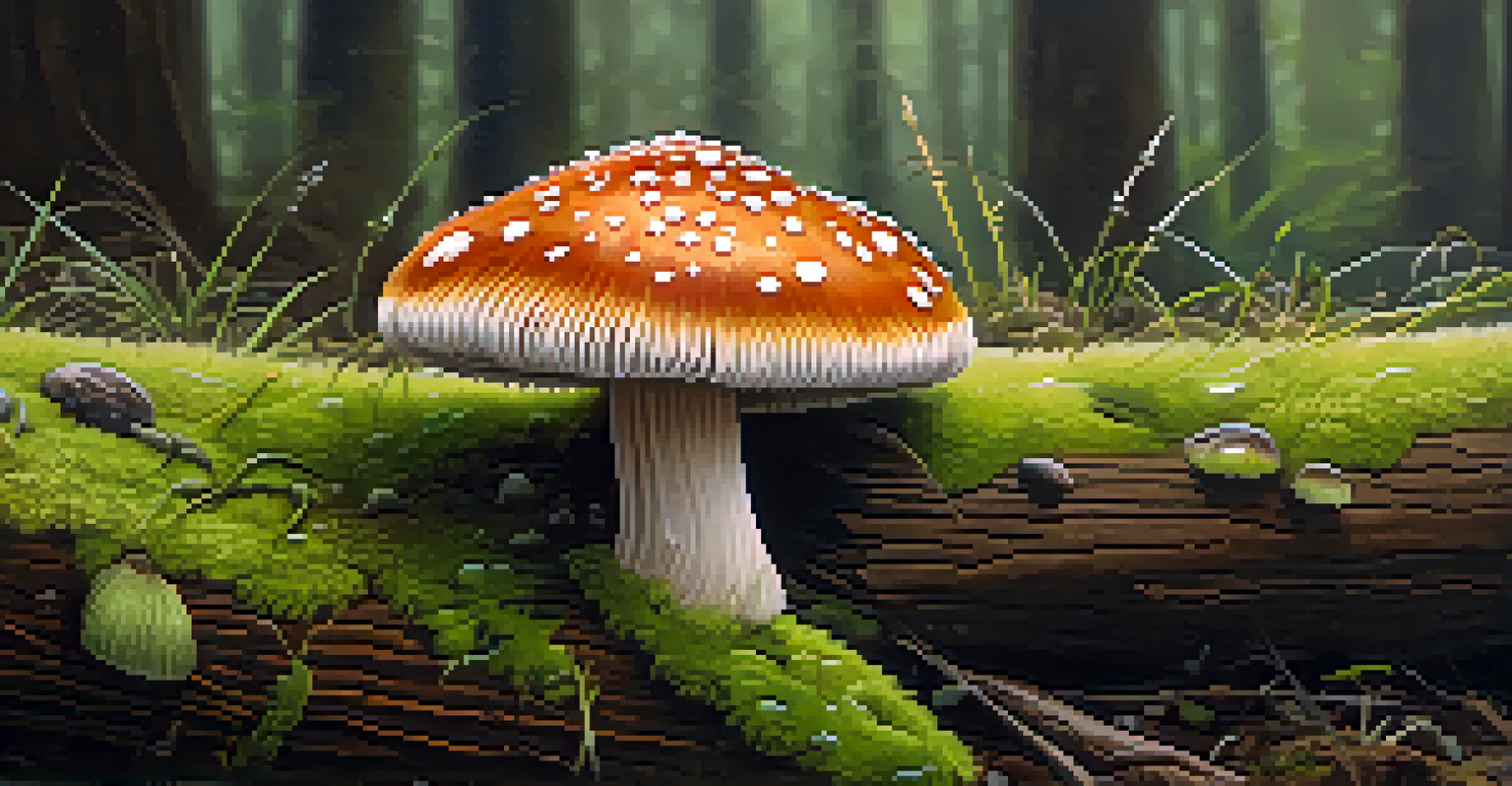Neuroscience of Entheogens: Impacts on Therapeutic Practices

Understanding Entheogens: A Brief Overview
Entheogens are substances that have been used for centuries in various cultures to induce altered states of consciousness. These include natural compounds like psilocybin mushrooms, ayahuasca, and peyote. Their use often revolves around spiritual growth, healing, and profound personal insights, making them an intriguing subject for modern neuroscience.
The greatest discovery of my generation is that a human being can alter his life by altering his attitude.
Recent studies have shown that entheogens can significantly impact brain activity, promoting neural plasticity—the brain's ability to adapt and reorganize itself. This property is crucial in therapeutic settings, as it allows individuals to break free from entrenched thought patterns associated with conditions like depression and PTSD.
By exploring the neuroscience behind these substances, researchers aim to bridge ancient wisdom with contemporary therapeutic practices. Understanding how entheogens work at a neurobiological level may unlock new avenues for treating mental health disorders.
The Brain's Response to Entheogens
When entheogens are ingested, they interact with various neurotransmitter systems in the brain, primarily the serotonin receptors. This interaction can lead to profound alterations in perception, mood, and thought processes, allowing for a fresh perspective on personal issues. It's like shaking up a snow globe; when the snow settles, you might see things clearer than before.

Research has demonstrated that the brain regions involved in emotional regulation and introspection become highly activated during entheogenic experiences. This heightened activity can facilitate deep emotional processing, which is often essential for healing trauma and overcoming psychological barriers.
Entheogens Promote Healing
Entheogens, such as psilocybin and ayahuasca, have shown potential in therapeutic settings for treating mental health disorders by promoting neural plasticity and emotional processing.
Moreover, the experience is often accompanied by feelings of interconnectedness and transcendence, which can lead to lasting changes in one’s outlook on life. This aspect is particularly significant in therapeutic contexts, where fostering a sense of connection can improve overall mental well-being.
Therapeutic Uses of Entheogens in Modern Medicine
With growing interest, many researchers are looking into the therapeutic potential of entheogens for treating various mental health disorders. Clinical trials are underway to assess their efficacy in conditions such as anxiety, depression, and substance abuse. The preliminary results are promising, indicating that these substances can significantly improve patient outcomes.
The mind is everything. What you think you become.
For example, psilocybin therapy has shown remarkable results in alleviating treatment-resistant depression. Patients report not only immediate relief but also lasting changes in their emotional states, suggesting that entheogens may help 'reset' the brain's default mode network, which is often dysregulated in mental health issues.
These findings are reshaping the landscape of mental health treatment, challenging traditional approaches and opening the door to innovative, holistic healing practices. As acceptance grows, the potential for integrating entheogens into therapeutic frameworks becomes more feasible.
The Role of Set and Setting in Entheogenic Experiences
One crucial aspect of using entheogens therapeutically is the concept of 'set and setting,' which refers to the mindset of the individual and the physical environment in which the experience takes place. A supportive, safe environment can significantly enhance the therapeutic benefits while minimizing potential risks.
In clinical settings, trained facilitators guide individuals through their experiences, ensuring they feel safe and supported. This guidance helps patients navigate challenging emotional landscapes that may arise during their journeys, transforming potential distress into opportunities for healing.
Set and Setting Matter
The mindset and environment during entheogenic experiences play a crucial role in enhancing therapeutic benefits and ensuring patient safety.
Therefore, the therapeutic setting should be thoughtfully designed, taking into account comfort, safety, and the presence of supportive individuals. By paying attention to these factors, the transformative potential of entheogens can be maximized, leading to profound personal insights and healing.
Potential Risks and Ethical Considerations
While the benefits of entheogens in therapy are compelling, it's essential to address potential risks and ethical concerns. Not everyone may react positively to these substances, and adverse reactions can occur, particularly in individuals with a history of certain mental health conditions, like schizophrenia.
Furthermore, the use of entheogens raises ethical questions about consent and the potential for misuse. Establishing clear guidelines and protocols is vital to ensure that these substances are used responsibly and that patients fully understand the risks involved.
As research continues and the therapeutic landscape evolves, it's crucial for practitioners to prioritize safety and ethics, fostering an environment where entheogens can be explored with the utmost care and respect.
The Future of Entheogens in Therapeutic Practices
Looking ahead, the integration of entheogens into mainstream therapeutic practices seems promising. As more research emerges, there is potential for these substances to become recognized as legitimate tools in mental health treatment, similar to how psychedelics are increasingly accepted today.
Collaborations between researchers, clinicians, and policymakers will be essential in shaping the future landscape of entheogenic therapy. By working together, these groups can create frameworks that ensure safe and effective use while addressing any societal concerns.
Ethics in Entheogenic Therapy
While promising, the use of entheogens in therapy raises ethical concerns regarding consent and potential adverse reactions, necessitating responsible guidelines.
Ultimately, the future of entheogens in therapy could pave the way for a more holistic approach to mental health, one that honors ancient practices while leveraging modern scientific understanding. This synergy may not only offer new solutions for those suffering but also contribute to a broader cultural shift in how we view mental health and healing.
Conclusion: Embracing a New Paradigm in Healing
The exploration of entheogens within the realm of neuroscience and therapy is indeed a journey into uncharted territories. As we continue to unravel the complexities of the brain and the profound effects of these substances, a new paradigm in healing is emerging. This paradigm encourages openness to alternative methods and acknowledges the interconnectedness of mind, body, and spirit.
By embracing the potential of entheogens, we invite a holistic approach to mental health that values personal experience and deep psychological exploration. This shift not only has the power to transform individual lives but can also reshape societal perspectives on mental health treatment.

As we stand at the crossroads of tradition and innovation, the future of therapeutic practices involving entheogens holds the promise of healing, understanding, and profound transformation for those seeking relief from mental health challenges.